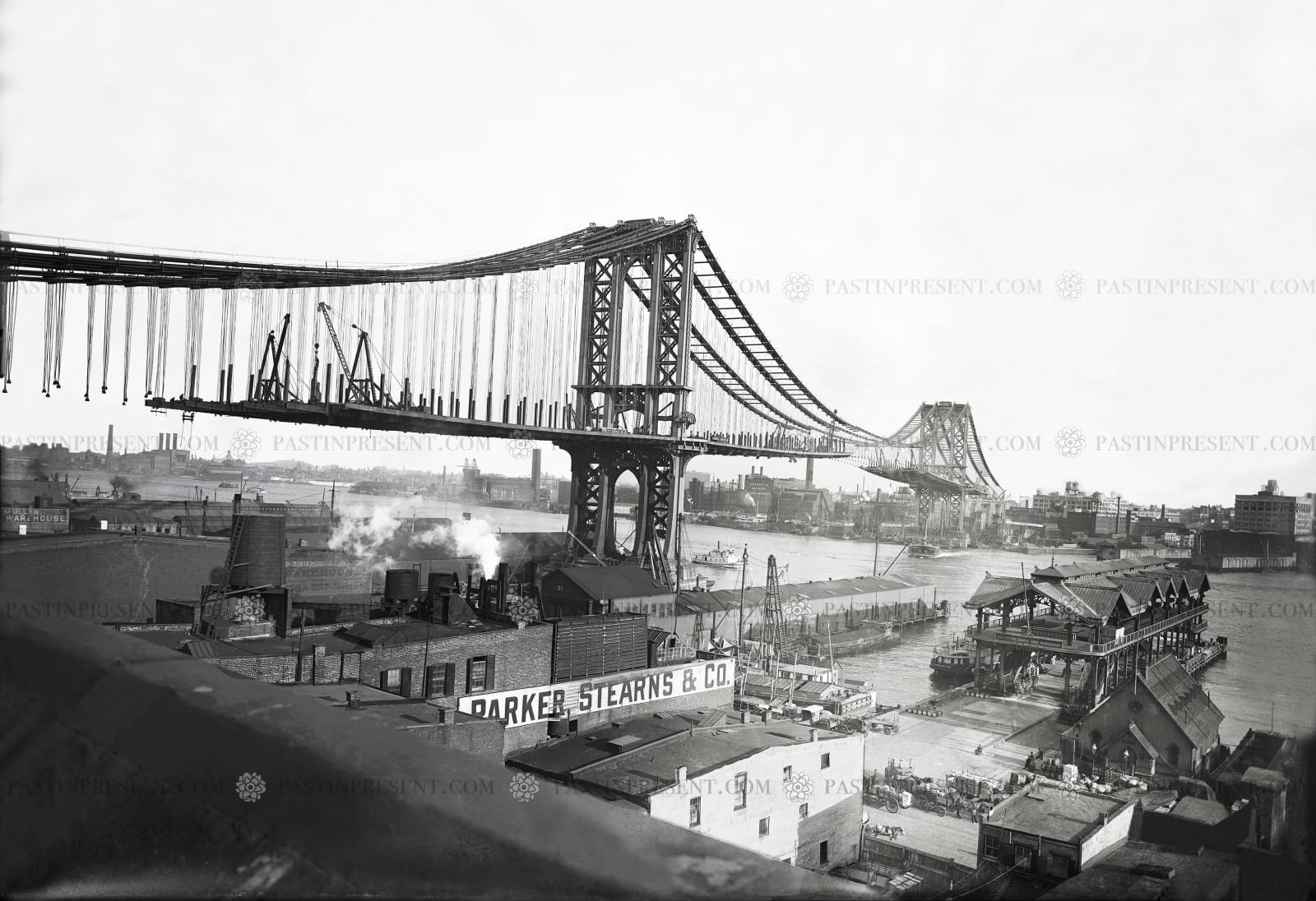 Building the suspended roadway of the Manhattan Bridge, 1909
Building the suspended roadway of the Manhattan Bridge, 1909
 Building the suspended roadway of the Manhattan Bridge, 1909
Building the suspended roadway of the Manhattan Bridge, 1909
 Building the suspended roadway of the Manhattan Bridge, 1909
Building the suspended roadway of the Manhattan Bridge, 1909
 Building the suspended roadway of the Manhattan Bridge, 1909
Building the suspended roadway of the Manhattan Bridge, 1909
 Original vintage glass camera negative, 1909 (display only not for sale)
Original vintage glass camera negative, 1909 (display only not for sale)
Building the suspended roadway of the Manhattan Bridge, 1909
Further images
This single span suspension bridge contains one of the longest suspension spans in the U.S., and had the largest carrying capacity in the country when it was built. The Manhattan Bridge was the first suspension bridge to use a Warren truss in its design. It has a main span of 1,480 ft (451 m) between two 350-foot (110 m) suspension towers. The deck carries seven vehicular lanes, four on an upper level and three on a lower level, as well as four subway tracks, two each flanking the lower-level roadway. The span is carried by four main cables, which travel between masonry anchorages at either side of the bridge, and 1,400 vertical suspender cables. Carrère and Hastings designed ornamental plazas at both ends of the bridge, including an arch and colonnade in Manhattan that is a New York City designated landmark. The bridge's use of light trusses influenced the design of other long suspension bridges in the early 20th century.









